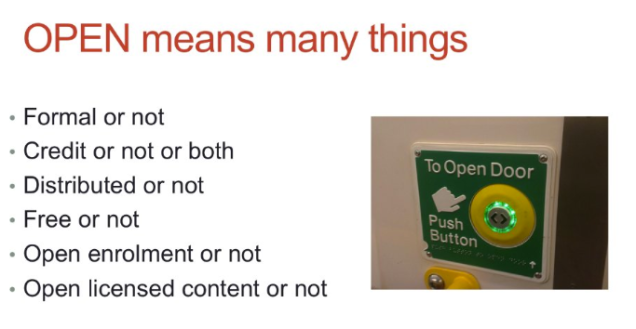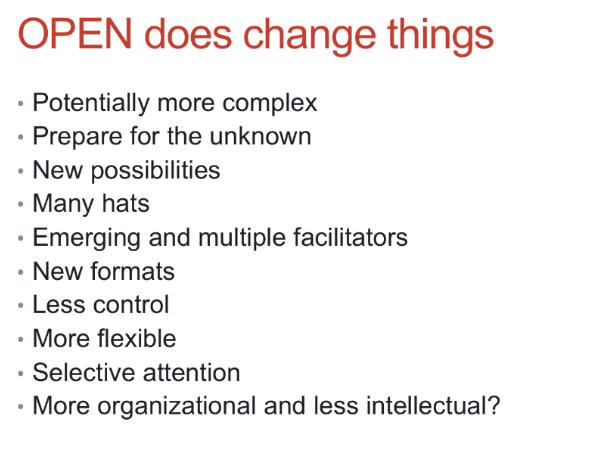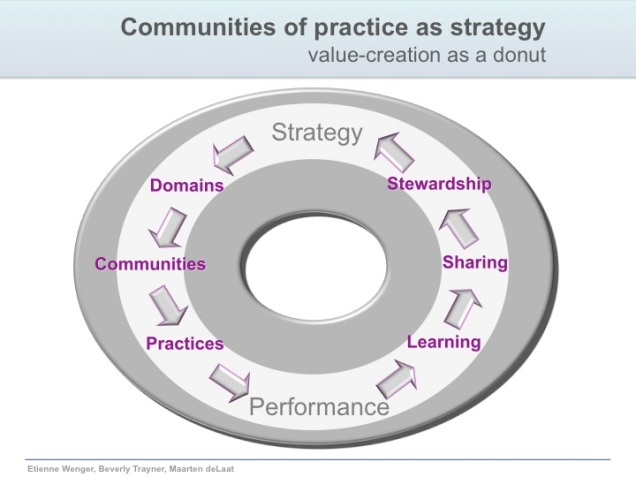In this final week of the third iteration of the Modern and Contemporary American Poetry MOOC – Al Filreis (the MOOC convener) has asked ModPo participants how the ModPo community works:
I am now here in Madison, Wisconsin, USA, and will be presenting about ModPo at a conference here. The conference is called “Building Massive Open Online Communities,” and the organizers of the conference believe that ModPo is an instance of a so-called “MOOC” that does indeed make a learning community possible—indeed perhaps even necessary to the success of the course.
I want your help in presenting to the people here about the ModPo community. How does it work? What would you like to say to the people here at this conference about the way we’ve conducted ourselves as an online community of learners? What are some advantages, in your experience, of the collaborative and interactive approach?
This is an interesting question. The evidence suggests that ModPo has formed a community of practice very successfully.
Etienne Wenger in his book Communities of Practice: Learning, Meaning, and Identity has written about the formation and work of communities of practice in detail, and on his website writes: In a nutshell ……
Communities of practice are groups of people who share a concern or a passion for something they do and learn how to do it better as they interact regularly.
This is true of ModPo – there is plenty of ‘passion for poetry’ in the forums and webinars, in the Facebook group and even on Twitter.
Here is a recent video of current ModPo students talking about their experience.
This video provides a flavour of the diversity of the community and the shared passion for poetry and for ModPo.
In Wenger’s terms ModPo is a community of practice as opposed to simply a community. ModPo participants (community members) gather together around the domain of poetry and share their practices. In the forums, there are shared interpretations of the poems introduced in the course, shared writing, shared poems, shared readings, shared close readings and shared cultural experiences. Sharing, social interaction and social learning are at the heart of the success of ModPo. Everyone’s contribution is welcome, from novice to expert, and there is a real sense that it is possible, for those who want to, to move from the periphery of the community along a trajectory of increasing competence to the centre of the community. It is also perfectly acceptable to remain as a legitimate peripheral participant. I myself feel very comfortable in this latter location.
Etienne Wenger, also in his book, explains that there are three dimensions of practice in a community:
- Mutual engagement (engaged diversity, doing things together, relationships, social complexity, community maintenance)
- A joint enterprise (negotiated enterprise, mutual accountability, interpretations, rhythms, local response)
- Shared repertoire (stories, artifacts, styles, tools, actions, discourses, concepts, historical events)
Shared history is an important aspect of a community of practice and in ModPo this is evidenced by people returning each year to do the course and through the course materials remaining open during the year. The history of the Kelly Writer’s House, from where the course is run has also been shared with ModPo participants.
This sense of place in ModPo is one of its unique features. ModPo participants are invited to enter this space, either physically or virtually each week and join the ModPo team and teaching assistants for discussion. The place and space feel immediate and real and I think are instrumental in forging a sense of community and belonging.
Returning to Etienne Wenger’s social learning theory, he describes four components of learning in a community of practice, which are all evident in ModPo
- Learning as doing (practice) – in ModPo doing is related to writing (assignments and peer reviews), close reading the poems, discussion and social interaction in the forums
- Learning as experience (meaning) – in ModPo learning is a shared experience which is negotiated between community members
- Learning as belonging (community) – in ModPo, for those who want it, it is possible to become a member of a world-wide community of poets and those who are passionate about poetry
- Learning as becoming (identity) – in ModPo, the very nature of the domain (poetry) and the personalized close readings inevitably have implications for personal identity development.
Finally, a community is not static, but dynamic. It has been interesting to see how ModPo has evolved and continues to grow as a community. Each year new members are welcomed and this year there seems to have been increased recognition that 30,000+ people cannot effectively communicate with each, but need to congregate in smaller groups. Study groups are encouraged and this year one of the community teaching assistants (Laura Cushing) took it upon herself to create a list of the study groups that were springing up around the world, so that participants could easily locate those in their geographical areas and arrange to meet face-to-face to socialize, share close readings and their passion for poetry.
 San Francisco Meet Up (Source of photo: ModPo course site)
San Francisco Meet Up (Source of photo: ModPo course site)
 Prague Meet Up (Source of photo: ModPo course site)
Prague Meet Up (Source of photo: ModPo course site)
 Washington DC Meet Up (Source of photo: ModPo course site)
Washington DC Meet Up (Source of photo: ModPo course site)
So there is plenty of evidence that the ModPo MOOC has created a community of practice around the course. I haven’t specifically answered all Al Filreis’ questions, but hopefully this post provides a sense of some of the ways in which ModPo has done this. I could write more, but I think that’s enough for now.






